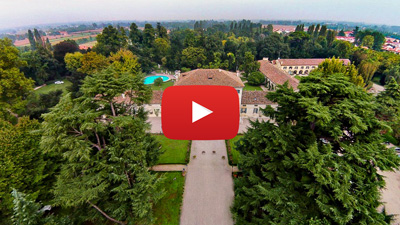History
History
Villa Condulmer, located in the Treviso countryside adjacent to Venice, is a Venetian Villa whose exact origin date remains uncertain. According to Mazzotti it was built on the seventeenth-Century; according to Venturini first works started in 1743 on commission of the Venetian patrician Alvise Condulmer.
Authoritative sources assert that the Villa was built on the ruins of an ancient monastery, attributed to the sixteenth Century, and whose vestiges refer to the barchessa orthogonal to the main house.
Over the centuries the villa underwent several changes of ownership, all linked to the absence of descendants of the dynasty that owned it. Indeed, from the Condulmer, the Villa passed to the noble Grassi family, later to Count Giovan Battista Tornielli, and then to the Bonaventura family, who still owns it together with the Monti family.
The building, which has been protected by the Fine Arts since 1930, is now the site of a hotel. It was the Monti family who, in 1959, transformed the old residence into a hotel, giving it to Alfredo Beltrame, owner of the El Toulà restaurant chain all over the world.
Prestigious five-star hotel in the Venetian hinterland, Hotel Villa Condulmer offers next to the innovative services available to its guests, the charm of a real 18th-century Venetian Villa.
Architecture and park
According to the dictates of the eighteenth-Century, which see the most magnificent examples of villa, it is the main representative space to be privileged, with the stately building preceded by the garden in axial configuration.
The main entrance, located on the eastern side at the end of an avenue, is characterized by a wrought iron gate with exposed brick pillars and rusticated finishes, all decorated with statues.
Following the entrance avenue, the two monumental cedars, of the Atlas on the left and of Lebanon on the right, stand majestically. The two ancient plants adorn the entrance to the stately building, which faces its main front to the south.
The ground floor is slightly raised, with the four steps leading to the entrance, beyond which the visitor is greeted by the large passing hall, the fulcrum of the building. The flooring is on the Venetian terrazzo; walls and ceiling are adorned with fine stuccos; the two ancient and rare handmade Murano glass chandeliers are symmetrical and precious.
Also in the hall (the ancient living room), you can admire 4 frescoes in bucolic theme, made around the half of the 19th. Century by the painter Eugenio Moretti Larese. In particular, the second on the right, portrays the then owner of the Villa, Count Giovan Battista Tornielli, together with his friend Giuseppe Verdi. The composer at the invitation of the count, stayed in the Villa from March 1853, to relax after the much criticized first play of “La Traviata”.
In the central part of the hall a large arched door is flanked by a window on each side. Going up the symmetrical stairs, you get to the main floor, also characterized by a large hall with Venetian terrazzo floor, an imposing majestic eighteenth-Century Murano glass chandelier in the middle of a fine noble coat of arms, a protruding terrace, and a remarkable verticality.
The pride of the Villa is the large eighteenth-century park designed by the architect Sebatoni, where it is easy to relax in quiet walks. Numerous are the imposing and rare trees, listed as monumental and secular. Of remarkable interest is the small pavilion overlooking the lake, the statues, the ruins, the numerous flowers and the typical essences of the ancient parks; finally the large and beautiful swimming pool in the middle of the green. Adjacent to the park of the villa, an eighteenth-century chapel, currently deconsecrated.

 Italiano
Italiano Español
Español
